Chest workouts with cable machines have become an essential part of many fitness enthusiasts’ routines, offering a versatile approach to strengthening and sculpting the chest muscles. Unlike traditional free weights, cable machines provide constant tension throughout the exercise, enabling more targeted muscle engagement and growth.
Whether you’re looking to enhance the upper, mid, or lower chest fibers, incorporating chest workouts with cable machines can lead to impressive gains in both strength and definition, making it a favored method among those aiming to achieve a well-rounded chest development.
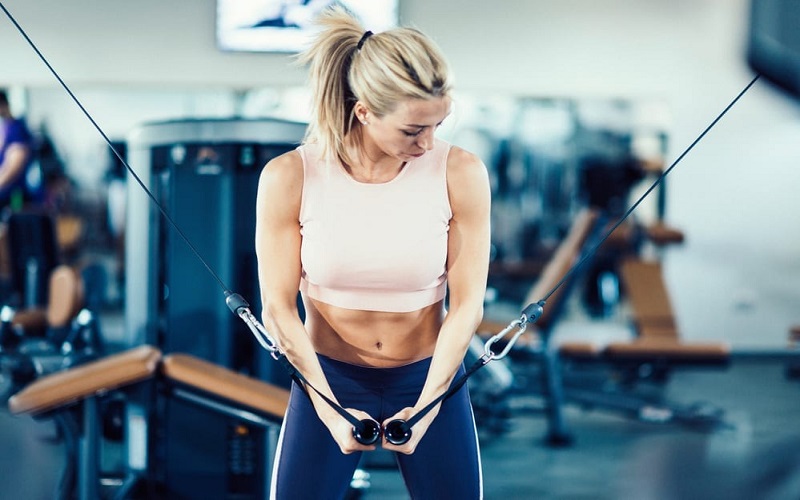
Benefits of Chest Cable Workouts
Chest cable workouts offer a multitude of benefits that make them an essential part of any fitness regimen aimed at enhancing chest muscle development. Here are some of the key advantages:
- Improved Muscle Activation: Cable exercises engage a larger number of muscle fibers compared to some traditional free-weight exercises. This heightened activation leads to more comprehensive muscle development.
- Joint-Friendly Movements: The smooth, controlled movements possible with cable machines put less strain on the joints, reducing the risk of injury and making these workouts suitable for people with previous joint issues.
- Continuous Muscle Tension: A standout feature of cable workouts is the constant tension on the muscles throughout the entire range of motion. This continuous load is effective for stimulating muscle growth and improving endurance.
- Versatility: Cable machines allow for a wide variety of exercises that can target the chest from different angles, ensuring a well-rounded development of the pecs, including the upper, middle, and lower regions.
- Isolation Capabilities: Cable workouts excel in isolating the chest muscles, minimizing the involvement of secondary muscle groups. This focus helps in sculpting and defining the chest more precisely.
- Enhanced Posture and Core Engagement: Performing chest exercises with cables often requires stabilization from the core and back muscles, which can lead to improved posture and increased core strength over time.
- Customizable for All Levels: Whether you’re just starting or are an experienced athlete, cable chest exercises can be easily adjusted in terms of weight and complexity to match your fitness level, allowing for gradual progression and adaptation.
Incorporating a variety of cable chest exercises into your workout routine, such as cable flyes, standing cable presses, and cable crossovers, can significantly enhance both the appearance and functionality of your chest. These exercises provide a balanced approach to chest muscle development, focusing on growth, strength, and aesthetic definition.
Chest Workouts with Cable Machine
Here is a curated list of the top 10 best chest cable workouts that can significantly enhance pectoral strength and definition:
- Cable Chest Press
- Flat Cable Chest Fly
- Low-to-High Cable Chest Fly
- Cable Crossover
- Standing Cable Chest Press
- Incline Cable Bench Press
- Incline Cable Fly
- Seated Cable Chest Press
- One Arm Cable Crossover
- Cable Chest Pullover
Incorporating these exercises into your chest workout regimen can lead to substantial improvements in strength, size, and aesthetics of the pecs. By utilizing the versatility and constant tension provided by cable machines, these workouts offer a balanced approach to chest development, catering to both beginners and advanced athletes aiming for a well-defined and powerful chest.
1. Cable Chest Press
The Cable Chest Press is a dynamic exercise that targets the chest, triceps, and shoulders. It’s performed using a cable machine, offering a variation to the traditional bench press by providing constant tension throughout the movement.
How to Perform:
- Start by attaching handles to the cables at chest height.
- Stand in the middle of the cable machine with your feet shoulder-width apart for stability.
- Grip the handles with palms facing down and elbows bent at a right angle.
- Push the handles straight out in front of you, extending your arms fully.
- Slowly return to the starting position, maintaining control.
Tips:
- Keep your core engaged throughout the exercise to maintain balance.
- Avoid locking your elbows when your arms are fully extended.
- Adjust the weight to a level that allows you to perform the exercise with proper form.
- Focus on a smooth, controlled movement to maximize muscle engagement.
2. Flat Cable Chest Fly
The Flat Cable Chest Fly is a targeted chest exercise that isolates the pectoral muscles, promoting growth and increased muscle definition. It’s performed on a flat bench positioned between two cable machines, utilizing the constant tension from the cables to enhance muscle engagement.
How to Perform:
- Position a flat bench between two cable stations and attach single-grip handles to both.
- Lie down on the bench with your feet flat on the floor for stability.
- Grab the handles with your palms facing each other and extend your arms out to the sides, keeping a slight bend in your elbows.
- With controlled motion, bring the handles together above your chest, squeezing your pecs at the top of the movement.
- Slowly return to the starting position, maintaining tension on the chest muscles.
Tips:
- Keep the movement controlled and focus on using your chest muscles to perform the work.
- Avoid locking your elbows to keep constant tension on the pecs and reduce strain on the joints.
- Do not let the weights touch at the bottom of the movement to ensure your chest muscles remain active throughout.
- Focus on quality over quantity; select a weight that allows you to maintain proper form for the desired number of reps.
3. Low-to-High Cable Chest Fly
The Low-to-High Cable Chest Fly is a strength training exercise focusing on the upper chest muscles. It involves moving the arms from a lower position to a higher one, using cables to provide resistance. This exercise helps in sculpting the upper pectorals and enhancing the overall chest definition.
How to Perform:
- Set the cable pulleys to the lowest position and attach single-grip handles to each.
- Stand in the center of the cable machine with your feet shoulder-width apart, slightly bending your knees for stability.
- Lean forward slightly, grip the handles with palms facing forward, and start with your hands down by your sides.
- With a slight bend in your elbows, pull the handles up and together in an arc motion until your hands meet in front of your chest.
- Slowly lower your arms back to the starting position in a controlled manner.
Tips:
- Keep your core engaged throughout the exercise to maintain balance and stability.
- Focus on using your chest muscles to lift the weights rather than relying on your arms.
- Avoid jerking motions; ensure the movement is smooth and controlled.
- Do not let the weights control the return movement; resist against the pull to maximize engagement.
- Experiment with grip variations (palms facing up or inward) to target different parts of the upper chest.
4. Cable Crossover
The Cable Crossover is a versatile chest exercise that targets the pectoral muscles by pulling cables from high to low across the body. It helps in defining the chest by focusing on the stretch and contraction of the chest muscles, enhancing muscle tone and strength.
How to Perform:
- Set the cable machines to a high position and attach single-grip handles to each side.
- Stand in the middle of the cable station with one foot slightly in front of the other for stability.
- Lean forward slightly at the waist, keeping your back straight.
- Grip the handles with your palms facing down and arms extended out to the sides at shoulder height.
- With a slight bend in your elbows, bring your hands together in front of you at waist level, crossing one hand over the other.
- Slowly return to the starting position, allowing your chest to stretch out.
Tips:
- Keep the movement controlled and focus on feeling the contraction in your chest muscles.
- Avoid using too much weight, as it can lead to poor form and reduce the effectiveness of the exercise.
- Ensure your movements are smooth and steady to maintain constant tension on the chest.
- Do not lock your elbows; keep them slightly bent throughout the exercise to protect your joints.
- Experiment with crossing your hands at different heights to target various parts of the chest.
5. Standing Cable Chest Press
The Standing Cable Chest Press is a compound exercise that targets the chest, triceps, shoulders, and engages the core. Performing this exercise standing up, as opposed to lying down, introduces an element of stability and core strength, making it a more functional movement that mimics everyday activities.
How to Perform:
- Set both pulleys to slightly above shoulder height on a cable machine and select the desired weight.
- Stand in the center of the cable machine with your feet shoulder-width apart, slightly bending your knees.
- Grasp both handles with a slightly pronated (palms facing down) grip.
- With your elbows bent and pointed out to the sides, press the handles straight forward until your arms are fully extended in front of you.
- Slowly return to the starting position, allowing your elbows to come back slightly behind your body.
Tips:
- Keep your core engaged throughout the exercise to maintain balance and stability.
- Focus on pushing through your chest rather than just moving your arms to engage the pectoral muscles effectively.
- Do not lock your elbows at the end of the press to keep tension on the muscles and protect your joints.
- Adjust the pulleys and weight to find the most comfortable position that allows for a full range of motion without straining.
- Breathe out as you press the handles forward and inhale on the return to starting position.
6. Incline Cable Bench Press
The Incline Cable Bench Press is a compound exercise that targets the upper chest, shoulders, and triceps. By using cables instead of free weights, it provides constant tension on the muscles throughout the movement, promoting muscle growth and strength. This variation is performed on an incline bench set between two low pulleys, effectively targeting the upper pectoral muscles.
How to Perform:
- Place an incline bench (set at about a 45-degree angle) in the middle of a cable machine, with the pulleys set to the lowest position.
- Sit on the bench, then lie back and grasp one handle in each hand with your palms facing forward.
- Start with your hands at chest height, elbows bent and pointing towards the floor.
- Press the handles upwards and slightly together, extending your arms fully.
- Slowly lower the handles back to the starting position, controlling the weight throughout the movement.
Tips:
- Ensure your feet are planted firmly on the ground and your back is flat against the bench for stability.
- Keep the movement smooth and controlled, focusing on the contraction of the upper chest muscles.
- Avoid locking your elbows at the top of the press to maintain continuous tension on the muscles.
- Adjust the weight to a level that allows you to perform the exercise with proper form while still challenging your muscles.
- Breathe out as you press the handles up and inhale as you return to the starting position.
7. Incline Cable Fly
The Incline Cable Fly is a chest isolation exercise that targets the upper portion of the pectoral muscles. Using an incline bench and cable machine, this exercise provides a unique tension curve that can lead to improved muscle definition and growth in the upper chest area.
How to Perform:
- Set an incline bench to about a 45-degree angle between two cable towers.
- Adjust the pulleys to the lowest position and attach single-grip handles to each.
- Lie on the bench with your feet flat on the floor, grabbing the handles with your palms facing each other.
- With a slight bend in your elbows, open your arms wide, stretching your chest.
- Bring the handles together in a smooth arc motion, squeezing your chest at the top.
- Slowly return to the starting position, maintaining control and keeping tension on your chest.
Tips:
- Keep the movement slow and controlled to maximize muscle engagement.
- Focus on squeezing your chest muscles as you bring the cables together.
- Avoid locking your elbows or using your shoulders to lift the weight; keep the focus on your chest.
- Ensure you’re selecting a weight that allows for full range of motion and proper form throughout the sets.
- Experiment with the angle of the bench to target different areas of your upper chest.
8. Seated Cable Chest Press
The Seated Cable Chest Press is an effective exercise for building strength and muscle in the chest, shoulders, and triceps. It is performed on a cable machine with a bench, allowing for a more stabilized movement compared to the standing version. This exercise provides continuous tension throughout the motion, promoting muscle growth and enhancing chest definition.
How to Perform:
- Sit on a bench positioned between the cable machine with your back firmly against the pad.
- Adjust the pulleys to align with your shoulder or mid-chest level.
- Grasp each handle with an overhand grip, palms facing down.
- Starting with your elbows bent and out to the sides, press the handles straight forward until your arms are fully extended.
- Pause briefly at the full extension, then slowly return to the starting position.
Tips:
- Keep your back flat against the bench throughout the exercise to maintain proper posture and stability.
- Focus on squeezing your chest muscles as you press the handles forward.
- Ensure that the movement is smooth and controlled, avoiding any jerky motions.
- Select a weight that allows you to complete the desired number of reps while still challenging your muscles.
- Breathe out as you press the handles away from your chest and inhale as you return to the starting position.
9. One Arm Cable Crossover
The One Arm Cable Crossover is a unilateral chest exercise that isolates and targets the pectoral muscles, focusing on one side of the chest at a time. This movement allows for a greater range of motion compared to bilateral exercises, enhancing muscle definition and strength by engaging both the inner and outer parts of the pecs.
How to Perform:
- Attach a stirrup handle to a cable machine at a point above your head, ensuring the handle is above head height when standing.
- Stand facing away from the machine, feet shoulder-width apart with a slight bend in your knees. If using the right hand, step forward with the left foot for balance, and vice versa for the left hand.
- Grasp the handle with one hand, palm facing down, and arm extended fully towards the cable machine.
- Keeping your torso steady, pull the handle down and across your body towards your opposite hip, maintaining a slight bend in your elbow.
- Slowly return the handle back to the starting position, controlling the weight as you extend your arm.
Tips:
- Focus on squeezing your chest muscles as you bring the handle across your body to maximize engagement.
- Keep your movements smooth and controlled to maintain constant tension on the chest muscle.
- Avoid rotating your torso; the movement should come from your arm and chest only.
- Utilize a weight that allows for a full range of motion and proper form throughout your sets.
- Breathe out as you pull the handle across your body and inhale as you return to the starting position.
10. Cable Chest Pullover
The Cable Chest Pullover is a compound exercise that primarily targets the pectoral muscles, while also engaging the lats, serratus anterior, and intercostals. This exercise uses a cable machine to provide constant tension, promoting muscle growth and definition across the chest and upper body.
How to Perform:
- Attach a straight bar to the high pulley of a cable station.
- Facing away from the machine, grasp the bar with both hands using an overhand grip, hands slightly wider than shoulder-width apart.
- Lean forward at the hips slightly and position your feet shoulder-width apart for stability.
- With a slight bend in your elbows, pull the bar down in a wide arc until it’s level with your thighs.
- Slowly return the bar back to the starting position, controlling the movement and feeling the stretch in your chest and lats.
Tips:
- Keep your core engaged throughout the exercise to maintain balance and support your lower back.
- Focus on moving through a full range of motion to maximize the stretch and contraction of the chest muscles.
- Avoid locking your elbows; maintain a slight bend to prevent joint strain.
- Ensure the movement is controlled and deliberate, especially when returning to the starting position to maintain tension on the target muscles.
- Adjust the weight to a level that allows you to perform the exercise with proper form while still challenging your muscles.
Frequent Question Answers
| Question | Answer |
|---|---|
| Which cable workout is best for chest? | The Cable Chest Press is often highlighted as one of the best cable workouts for the chest due to its effectiveness in targeting the pectoral muscles. |
| Can you build a chest with cables? | Yes, you can build a chest with cables. Cable exercises provide constant tension on the muscles, promoting muscle growth and strength in the chest area. |
| Which exercise is best for chest line? | The Cable Crossover is considered one of the best exercises for defining the chest line, as it targets the inner and outer pecs effectively. |
| What is the number 1 chest exercise? | While subjective, the Cable Chest Press is frequently cited as a top chest exercise due to its comprehensive activation of the chest muscles. |
| Are dips good for chest? | Yes, dips are good for the chest, especially when performed with a slight forward lean to increase pectoral muscle engagement. |
| Is cable chest press better? | The cable chest press offers advantages such as continuous muscle tension and a greater range of motion, making it highly effective, though “better” can depend on individual goals and preferences. |
| Is chest easy to develop? | Chest development varies by individual, depending on factors like genetics, training intensity, and nutrition, so it may not be equally easy for everyone. |
| Is building chest easy? | Similar to chest development, ease of building chest muscles varies among individuals and requires consistent effort and proper training techniques. |
| Is chest line genetic? | The shape and definition of the chest line can be influenced by genetics, but targeted exercises can enhance muscular development and appearance. |
Conclusion
In conclusion, for those looking to enhance their chest muscles effectively, incorporating a range of cable exercises as highlighted across multiple fitness platforms can be incredibly beneficial. The versatility and safety of cable machines, along with the ability to maintain muscle tension throughout the exercises, make them an indispensable tool in achieving a bigger, stronger, and more defined chest.
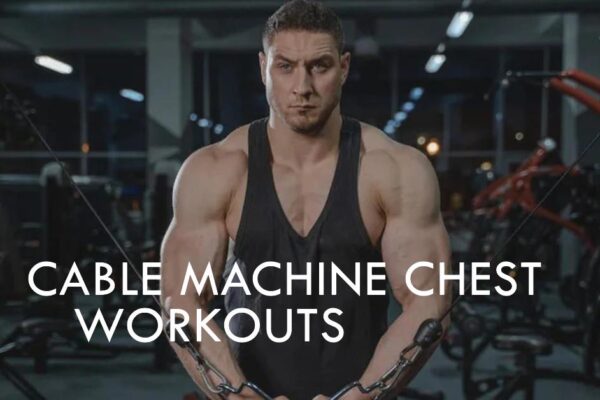


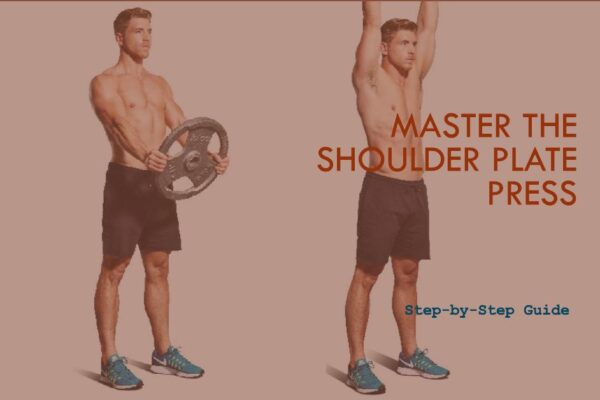
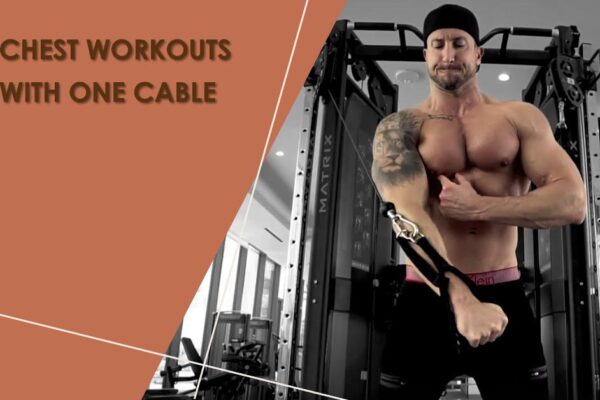
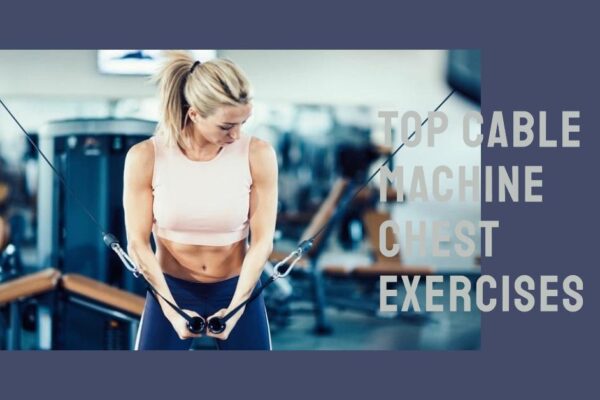
Leave a Reply